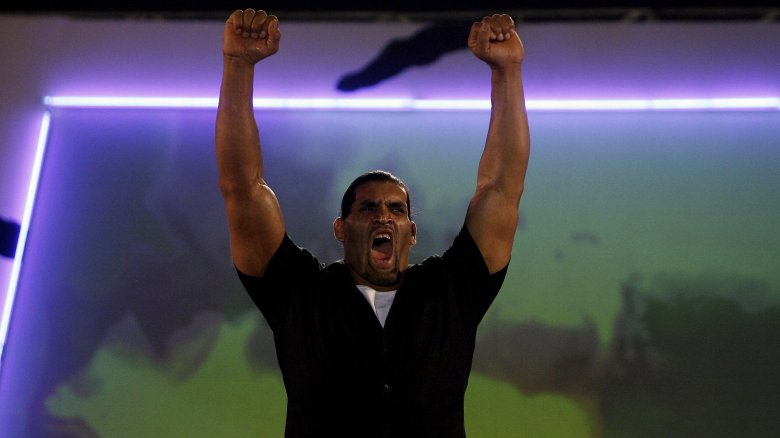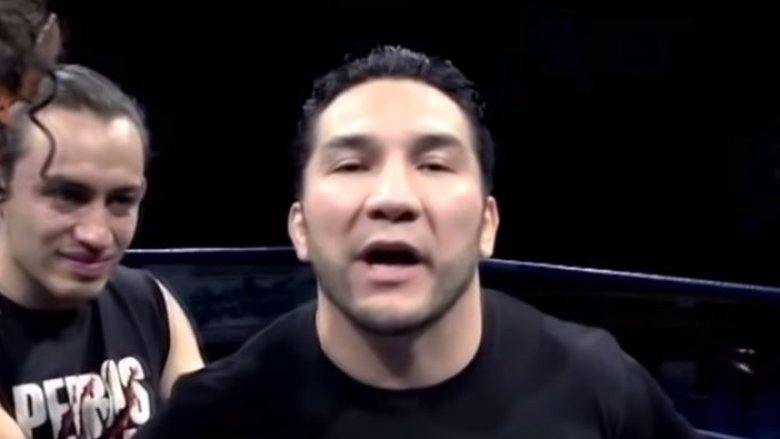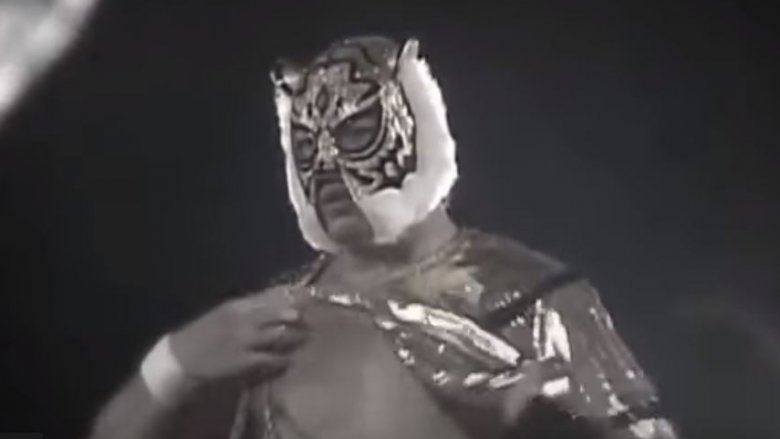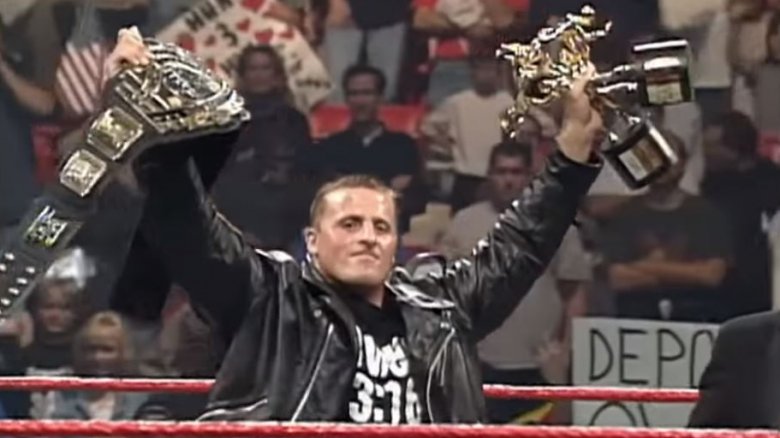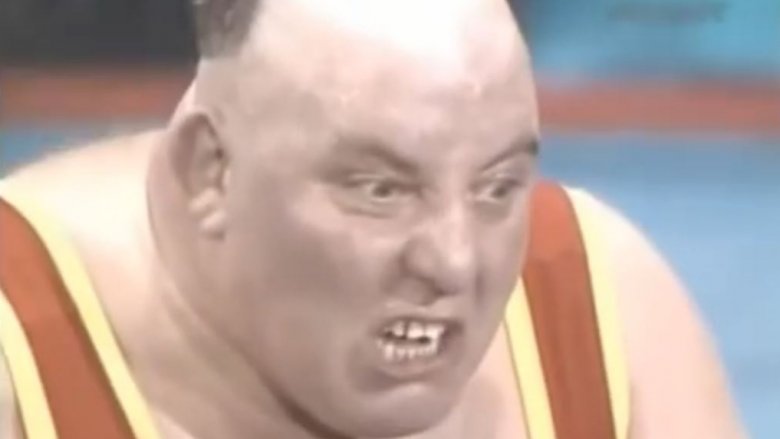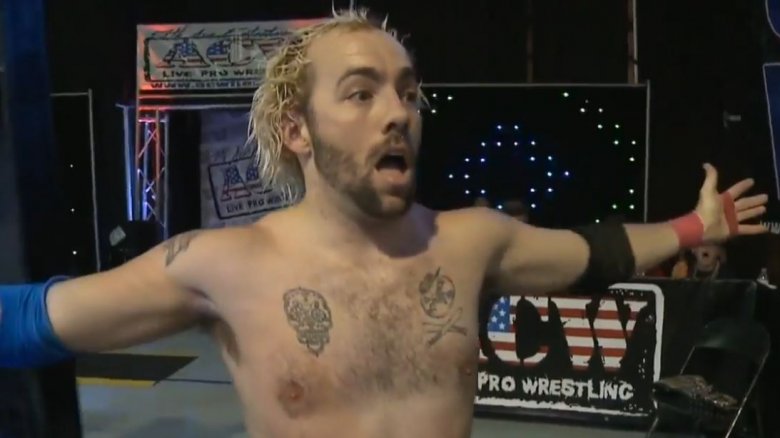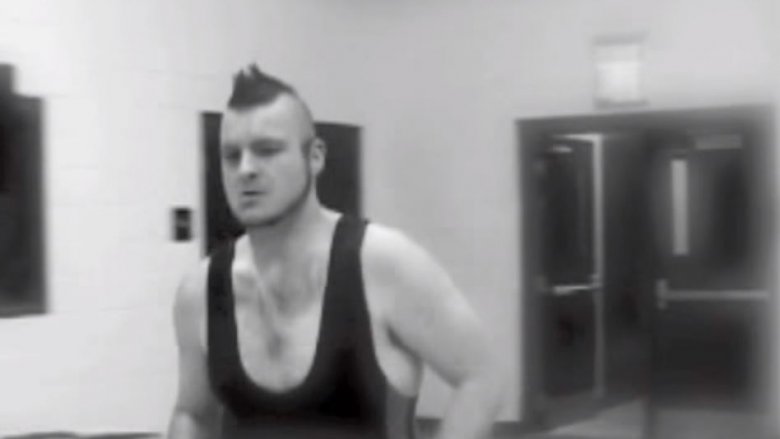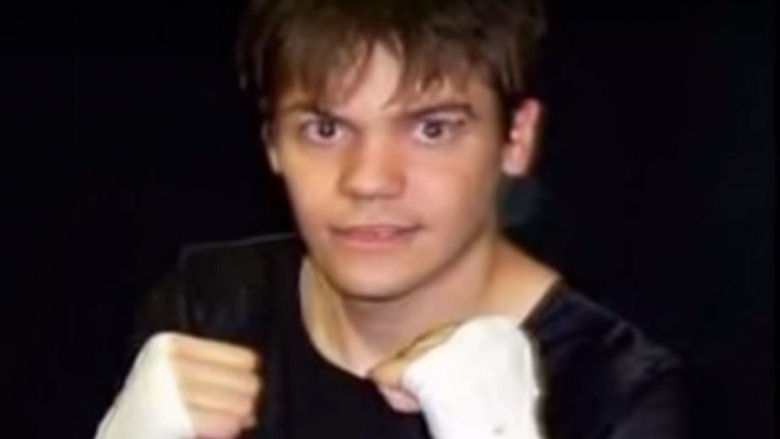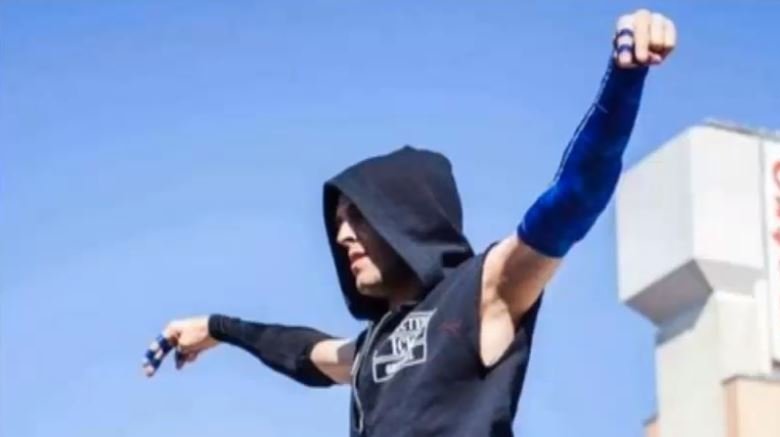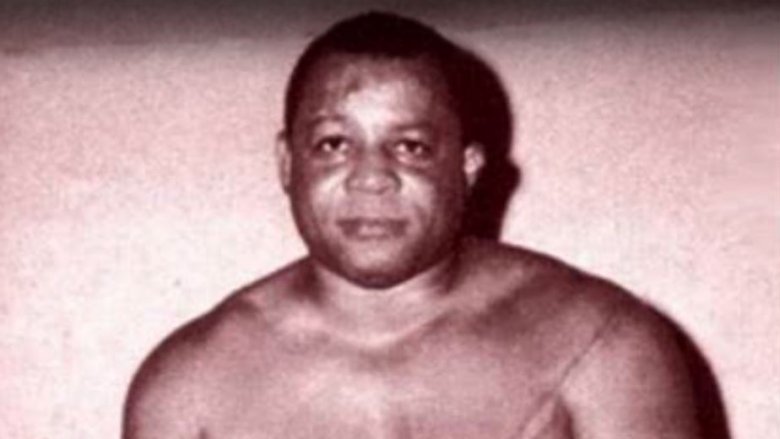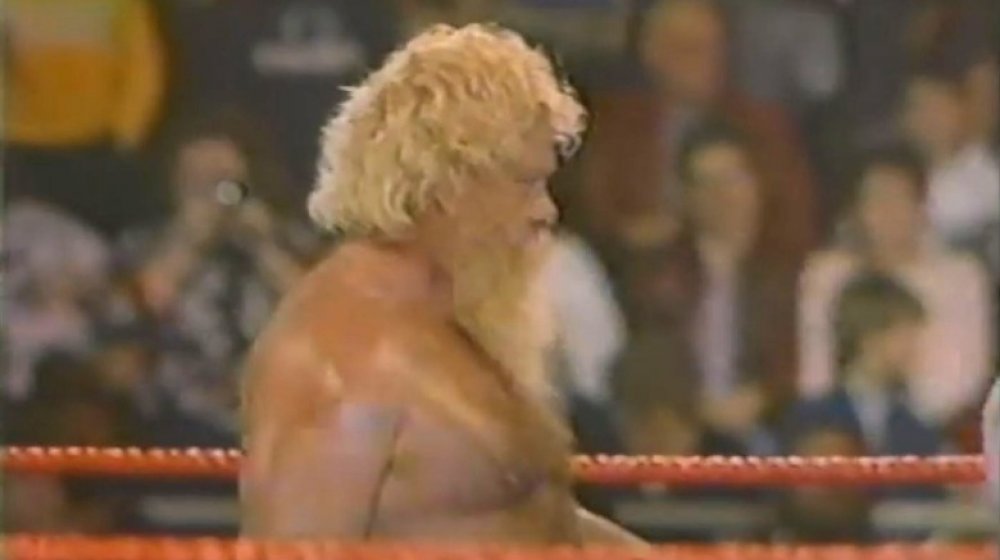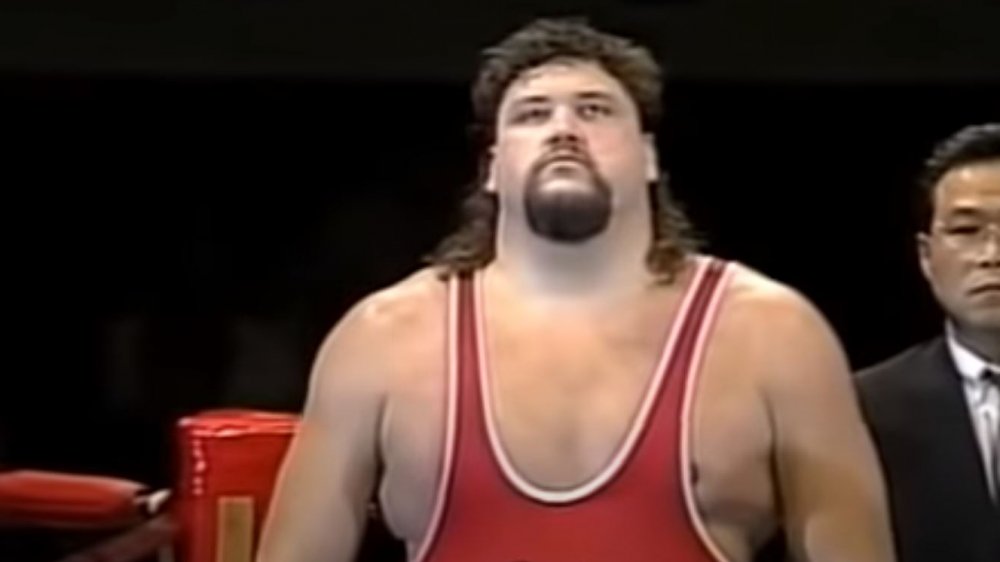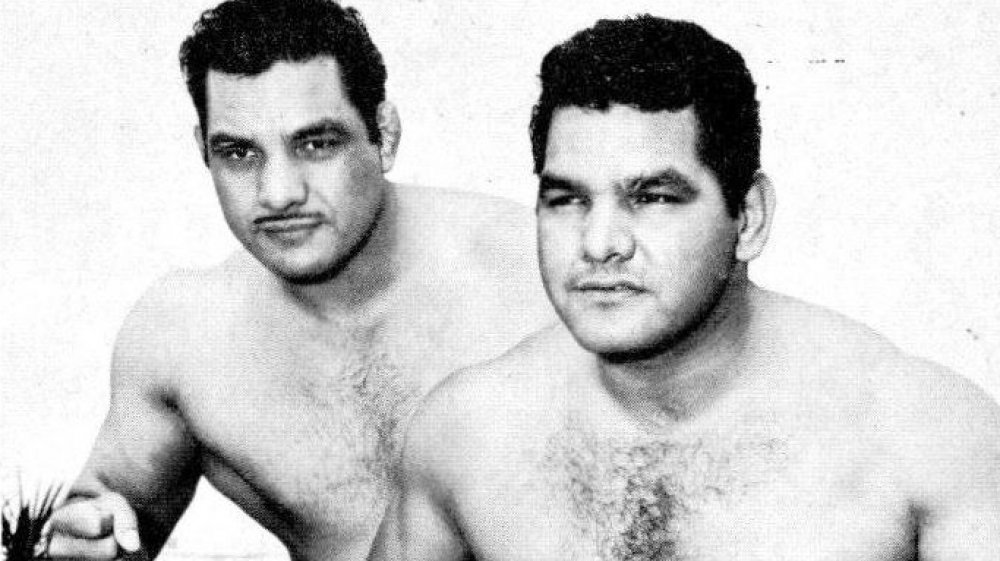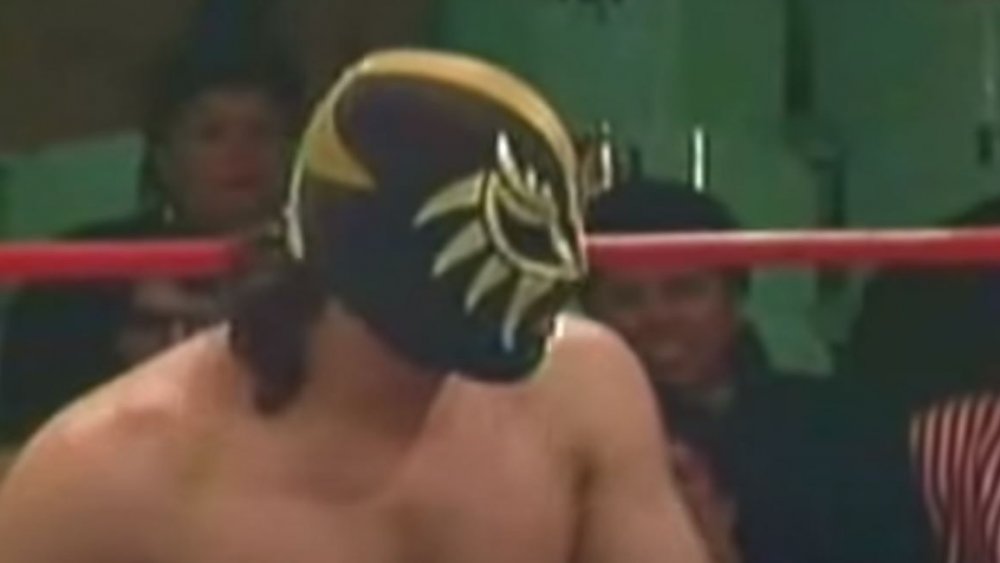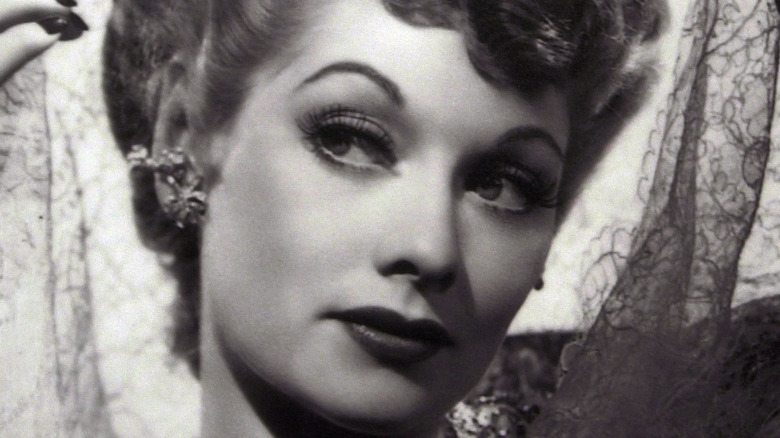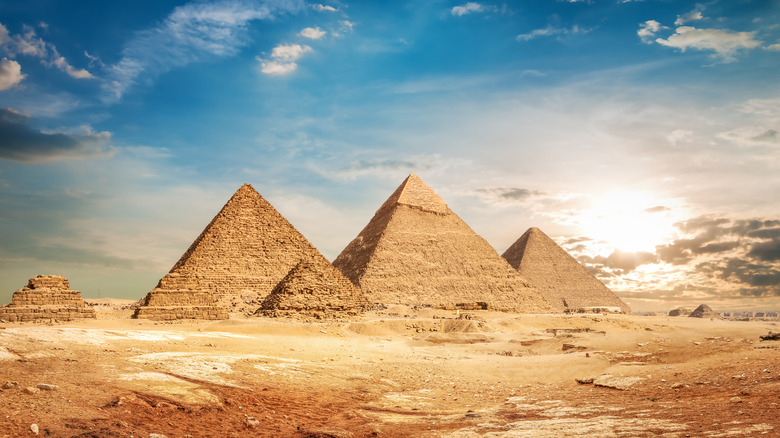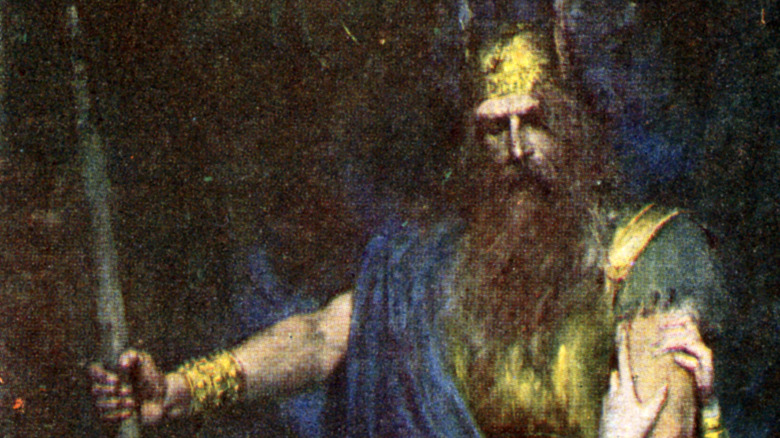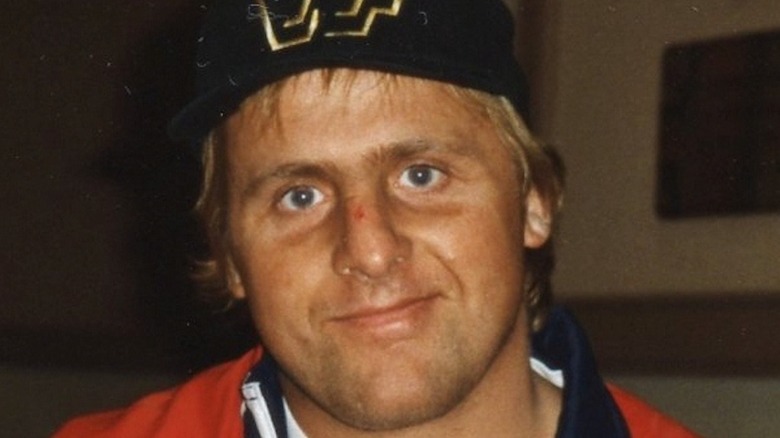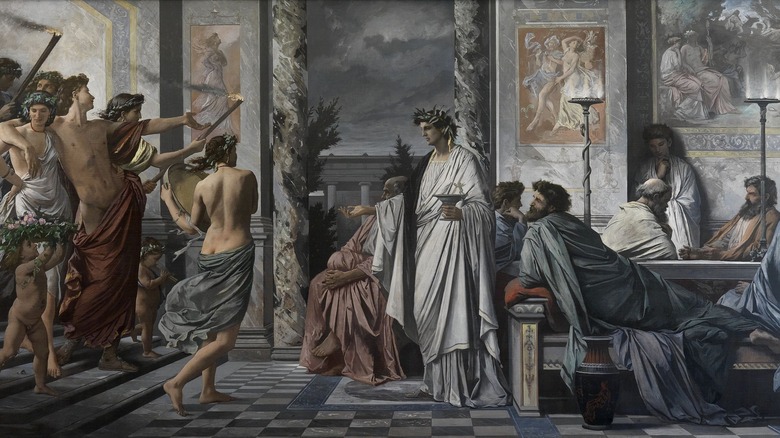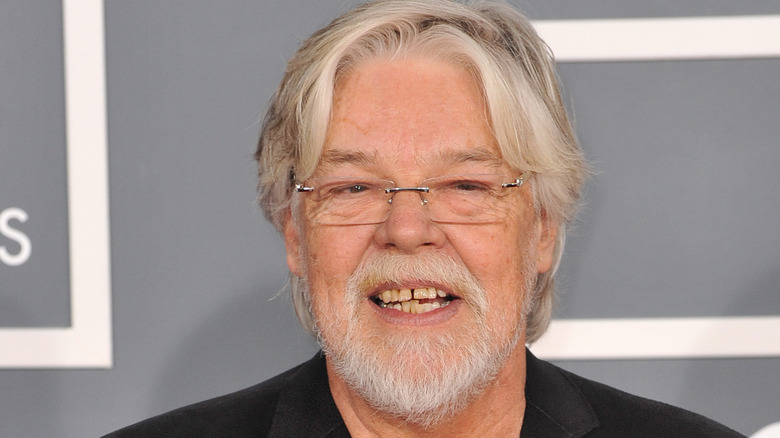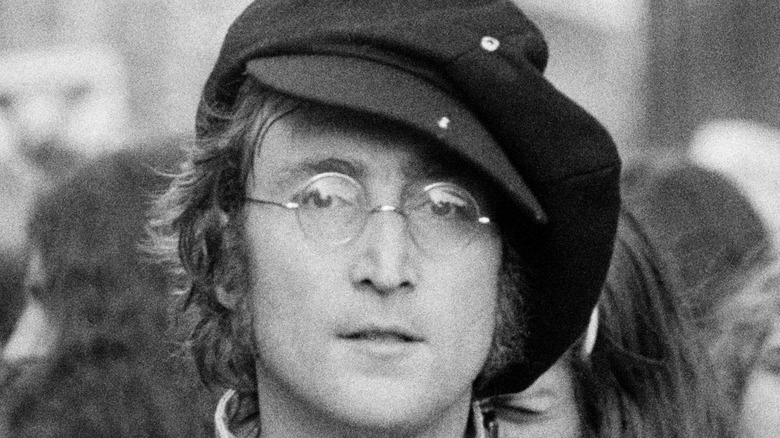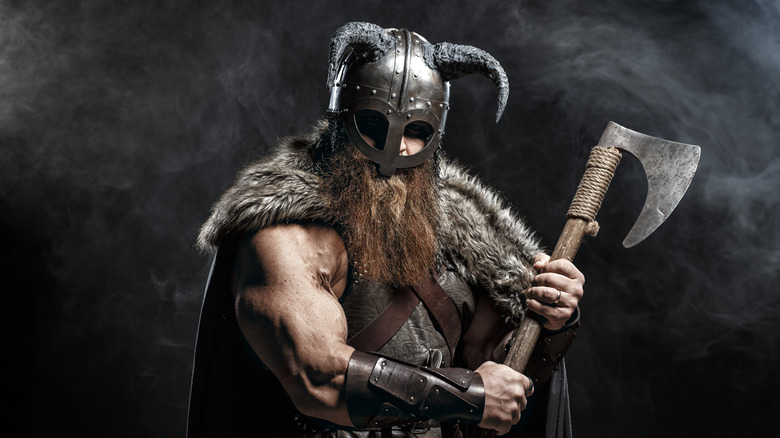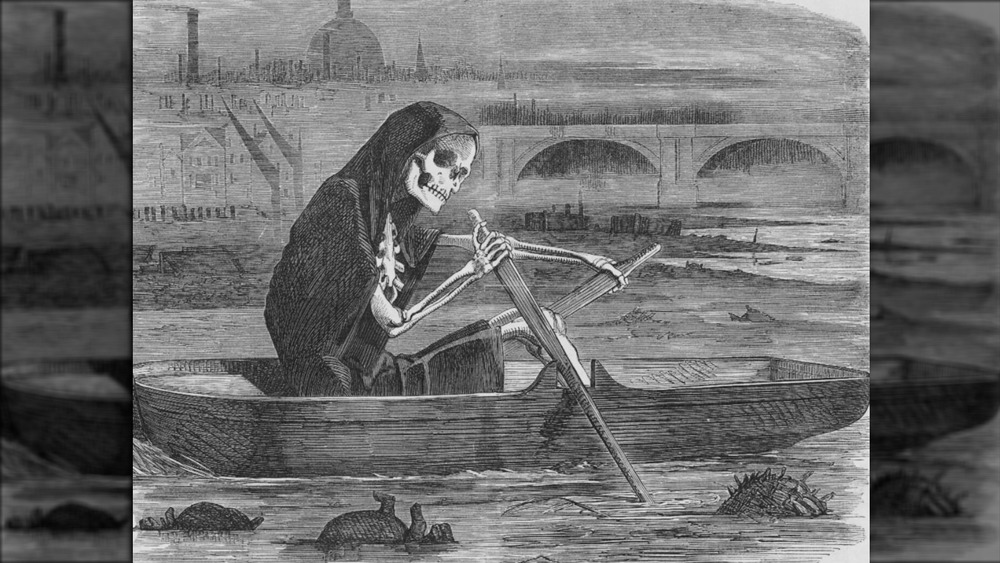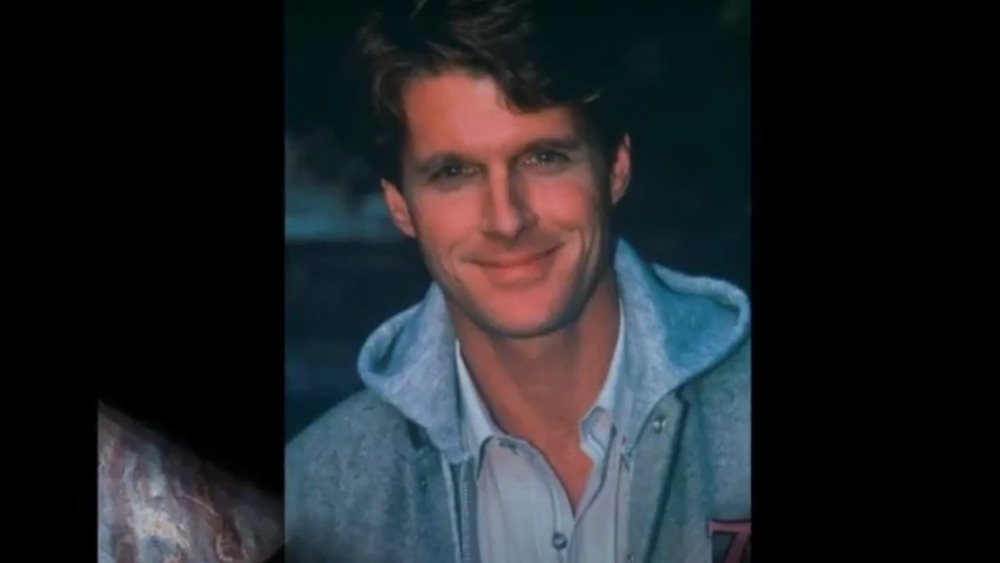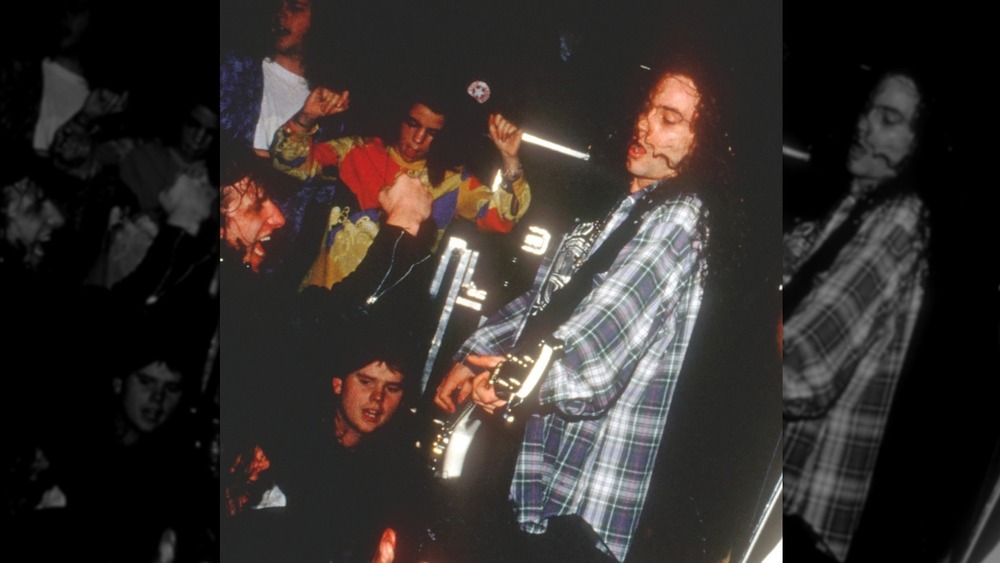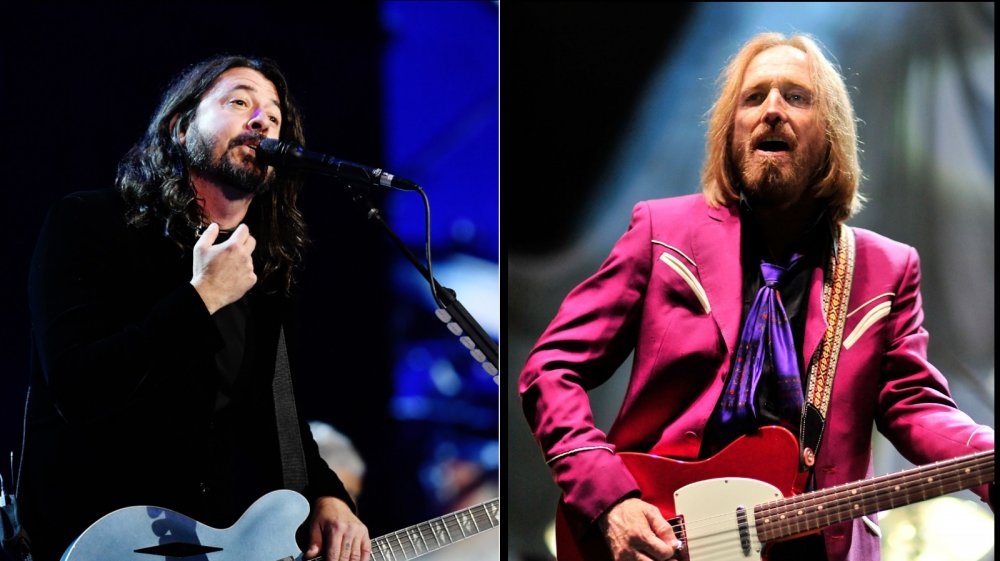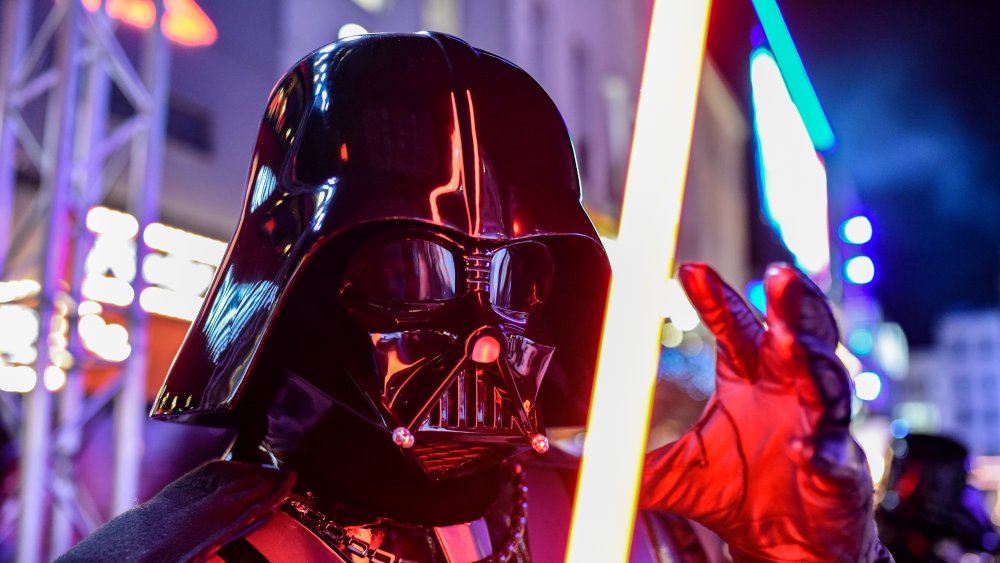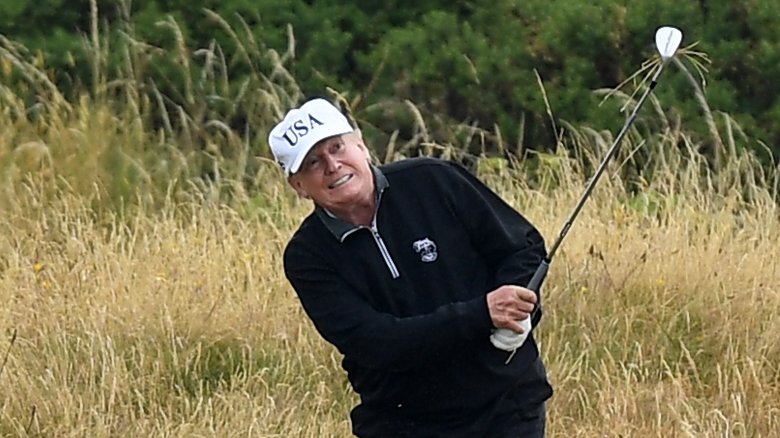
Wrestlers Who Died In The Ring
Professional wrestling is a dangerous job, and it’s not uncommon for wrestlers to pass away before their time. For some of them, the end comes before they even leave the ring — sometimes literally. Wrestlers tend to accumulate injuries, and some moves require them to trust their lives in their opponent’s hands. All this means a great many things can go wrong during a match. A botched move, a previously undiscovered medical condition, or even a piece of faulty equipment can all turn a cool, scripted performance into a deadly serious situation. For instance, Cage Side Seats describes an incident from 2014 in which WWE wrestler Seth Rollins almost impaled himself on a nasty metal spike during a match.
Rollins escaped his potentially lethal incident with a scare and an unpunctured torso, but sadly, many of his colleagues have been less fortunate. Here are the stories of the wrestlers who left everything they had in the ring, including their lives.
Brian Ong
Sometimes, one wrong move is all it takes to turn a normal sparring match into a tragedy. Brian Ong and Dalip “The Great Khali” Singh found this out the hard way in 2001, when Singh accidentally killed Ong in a dramatic training ring mishap.
However, RVCJ writes that the incident wasn’t a case where the massive Singh was clumsily manhandling his fellow wrestler. Instead, it was Ong who botched the move: A flapjack is executed by lifting the opponent up and pushing them in the air, so they land on their face and chest when they hit the mat. Instead of going along with this, Ong held on to Singh’s shirt and came down hard, severely hurting his head and spine. As such, Singh never faced any repercussions for the dramatic accident. The APW, on the other hand, found itself in seriously hot legal waters. According to Ringside Report, the fact that APW allowed Ong to keep working despite his many injuries ended up costing the promotion around $1.5 million in settlement money.
Hijo del Perro Aguayo
On March 21, 2015, a Mexican wrestling legend called Hijo del Perro Aguayo died. Syracuse.com describes the strange way the popular luchador, whose real name was Pedro Aguayo Ramirez, met his fate in a match where he faced another lucha libre superstar, Rey Mysterio Jr. The tag team brawl pitted Aguayo and his partner Manik against Mysterio and Extreme Tiger. Unfortunately, the match ended in a tragedy when a flying kick from Mysterio connected with Aguayo. The impact threw Aguayo into the ropes, where he was left unconscious and kneeling. The match went on for two minutes before the other wrestlers and the referee realized the man dangling in the ropes was actually seriously hurt and stopped the match. However, nothing could be done to save Aguayo: His vertebrae had snapped when his head hit the ropes. The Los Angeles Times reports that his ultimate cause of death was a heart attack, brought on by a cervical stroke from his broken neck.
Unsurprisingly, the incident deeply shocked the apologetic Mysterio, who had unwittingly caused his friend and colleague’s untimely demise. However, Aguayo’s family understood the situation, and asked Mysterio to act as Aguayo’s pallbearer.
Mitsuharu “Tiger Mask” Misawa
According to ESPN, Mitsuharu Misawa is to Japanese pro wrestling what The Rock and Hulk Hogan are to the American version. Misawa rose to fame in the 1980s as Tiger Mask, a character who … wore a tiger-themed mask. He was so popular that when he unmasked in 1990, his fame only increased. In 2009, Misawa was a 46-year-old veteran who had been named professional wrestler of the year three times, and was the owner and founder of the Pro Wrestling NOAH federation. He also still competed in the ring himself.
Cage Side Seats describes the tragic match that cut Misawa’s stellar career short. He and Go Shiozaki were teaming against Saito and Bison Smith at an event in Hiroshima on June 13, 2009. Saito gave Misawa a back suplex — a fairly common move that both men must have been extremely familiar with. However, what happened next shows that nothing in wrestling is truly routine, and even the most basic moves can turn into tragedies. Misawa didn’t move after the impact.
Misawa was declared dead at a hospital, though he was likely already lifeless before he was moved away from the ring. According to Cage Side Seats, his cause of death was heart failure.
Owen Hart
Owen Hart is known as the brother of Bret “The Hitman” Hart and a scion of the legendary Hart wrestling family. He’s also known for one of the most dramatic in-ring deaths in the history of professional wrestling.
In 1999, Hart’s gimmick was a masked superhero character known as Blue Blazer. The WWF decided to give him a fitting entrance for his appearance on the “Over the Edge” pay-per-view show on May 23: Because he was a superhero, the company would make him fly. They set up an elaborate system of wires that would lower the Blue Blazer to the ring from the rafters above, creating a truly magnificent effect. CNN describes just how badly this went wrong. The system malfunctioned while Hart was 78 feet above the ring and sent the helpless wrestler plunging down, where he hit the top rope and then bounced into the ring.
Though the incident never made it to television, the 16,000 people at the Kemper Arena witnessed the futile attempts by the medical staff to revive Hart, who died of internal bleeding. At first, some of the audience members thought the whole thing was a stunt and that the falling figure had been a doll. However, this impression wouldn’t last long. The ring announcer soon informed the audience that what had just happened was completely unscripted. Before the event was over, the WWF commentator Jim Ross announced to the world that Hart was dead.
King Kong Kirk
Mal “King Kong” Kirk was a well-known British monster heel, and a frequent tag team partner of the even more massive Giant Haystacks. According to the BBC, the former rugby player did not use a gimmick: His 350-pound frame was more than enough to intimidate his opponents.
On August 23, 1987, Kirk worked with Shirley “Big Daddy” Crabtree, who said Kirk had the strength of three people. Kirk and Big Daddy faced each other at the Hippodrome of Great Yarmouth. The match proceeded exactly as planned right up until the end, when Big Daddy gave Kirk his finishing move — a big splash that saw him jumping on his prone opponent. Kirk never kicked out from that finisher. The 50-year-old powerhouse was left lying in the ring, but it wasn’t the finishing move that killed him. An inquest of the incident discovered that Kirk died of a pre-existing heart condition. Big Daddy was cleared of all responsibility, and even King Kong Kirk’s widow said she held no bad feelings against her deceased husband’s final opponent.
Wayne “Richard Delicious” Van Dyke
Wayne Van Dyke, aka Richard Delicious, was an independent wrestler working Florida’s small promotions. According to Wrestling News, he was just 29 years old when he suffered a series of heart attacks that started during a tag team match at an event arranged by the Ronin Pro Wrestling promotion. Sportskeeda reports that Van Dyke complained to his tag partner that he wasn’t feeling well and suffered the first heart attack right after tagging himself out.
After that, things went from bad to worse. The attempts to give him CPR on the scene left Van Dyke with at least one broken rib and a punctured lung. He then suffered a second heart attack on his way to the hospital. When he finally reached the facility, he had a third one. At that point, hospital staff had to put him in a medically induced coma. Unfortunately, the damage was too much for his system, and Van Dyke’s family soon confirmed the wrestler’s passing on Facebook.
Plum Mariko
According to the New York Times, Japanese wrestler Plum Mariko died in the ring after her opponent power bombed her in 1997. Quebrada recounts that the match in question was a tag team event where Mariko and Command Bolshoi faced Mayami Ozaki and Rieko Amano. The match ended when Mariko took a punishing Ligerbomb from Ozaki and was knocked out cold. It wasn’t until after the match that Ozaki and the others realized Mariko still hadn’t moved, and was now snoring — which was a sign that her brain was bleeding. Quebrada reports that Mariko was rushed to hospital but even surgery couldn’t save her. The 29-year-old died of brain damage.
Mariko had accumulated a collection of nasty injuries over the years, including multiple concussions and an undiagnosed brain abscess. Doctors believe she died because of the combined effects of these injuries, rather than a single one from the Ligerbomb. They also said that if she had been examined earlier she likely would have lived because no doctor would have let her wrestle in her condition.
Plum Mariko’s was the first in-ring wrestling death in Japan. What makes her fate even more tragic is that the signs of brain damage were there. She had complained to her fellow wrestlers about headaches and had become forgetful in the ring. Instead of reacting appropriately to the problem, the promoters had just refused to push her to a higher status due to her sloppy work.
Matt “Riot” Lowry
Like everyone else on this list, Matt “Riot” Lowry died in the ring. However, poor Lowry didn’t even get much of an audience. According to Wrestling News Source, Lowry was participating in a routine training session when a bump went awry. Bob Magee of Online World of Wrestling has some more details about the incident: On September 15, 2009, the Ohio-based indy wrestler was training at ECW Arena with some other wrestlers who were working with the CZW promotion. After a ring workout, Lowry suddenly became dizzy and collapsed. He was immediately taken to hospital, but it was too late: The wrestler was declared dead just 14 hours later. He had suffered a fatal brain hemorrhage.
To make a tragic story even worse, Lowry was only 21 years old. At the time of his death, he was trying to get his beloved wrestling career back on track after losing his mother the previous year.
Dan “Spider” Quirk
Dan “Spider” Quirk was a kid that seemingly everyone liked. Adam Dolan of Pro Wrestling Insider describes him as a talented, passionate up-and-coming indy wrestler who worked with various promotions and was part of the close-knit Coastal Championship Wrestling community. Apart from wrestling, he did a ton of work behind the scenes and even ran the CCW website. He had a number of close friends in the industry. And then, on May 28, 2005, tragedy struck. According to Mandatory, Quirk had a match at a Universal Championship Wrestling event in Taunton, Massachusetts, when he missed a moonsault and crashed head-first onto the floor outside the ring. Quirk was only 22 when he died.
Later that year, the CCW promotion gave Quirk the indy wrestler’s equivalent of a Viking funeral when they dedicated their WrestleJam 2 event to his memory. Before the show, they held a ceremony where the entire CCW roster came out to the ring and remembered their fallen friend, sharing their favorite stories with the audience. They even had some serious star power among them: Wrestling superstar Matt Hardy was a guest at the event, and respectfully stood by Quirk’s friends and comrades for the entire ceremony. After some speeches and a highlight reel, the lights went back up. The promoter told the audience that the show would start soon, and it would be all right to laugh and have fun. After all, Spider would have wanted the show to go on.
Eric Denis
The in-ring death of Canadian wrestler Eric Denis in October 2017 was so unfair that it almost seemed like a bad joke. He was a fit, 40-year-old Canadian who had six children. He was an experienced pro wrestler who, according to the Independent, had been involved in the business for more than two decades. There were no big, botched moves or failed spots in his final match: Instead, his heart just suddenly gave out. Although qualified medical staff were present at the scene, they could not resuscitate Denis from the heart attack, and he was pronounced dead upon his arrival at the hospital.
What makes this incident particularly awful is the specific event Denis was participating in that day. He wasn’t just wrestling to pad his own pockets — instead, he was wrestling for charity. The fight gala during which he died was organized by Insane Championship Wrestling with the goal to raise money for Crohn’s disease patients.
Luther Lindsay
According to Wrestling Scout, Luther Lindsay died while performing his finisher … and still won the match. However, that’s just a small sliver of the man’s story. Last Word on Pro Wrestling describes Lindsay as a notorious trailblazer for African-American wrestlers. A college athlete in the heavily segregated 1940s, he knew what to expect when he started working the National Wrestling Alliance territories in the 1950s. Of course, it didn’t hurt that Lindsay was a strong and highly technical grappler who was trained by the legendary Stu Hart. Hart’s granddaughter, WWE Superstar Natalya, says Hart always carried a photo of Lindsay in his wallet … because Lindsay was the only man who had ever made him tap out.
In the late 1950s, Lindsay became the first African-American to face a white man in the wrestling ring in the South. A riot seemed imminent, but Lindsay was so awesome that the crowd in Tennessee was on his side. Industry legend Lou Thesz openly admired Lindsay, and Hart continued to push him well after other African-American wrestlers started emerging and hogging his limelight. And although Lindsay did eventually die in the ring, he went like he had lived: as a winner. On February 21, 1972, Lindsay won his match against Bobby Paul by pinning the man with a diving belly flop. A quick three-count later, it was discovered that Lindsay was dead of a massive heart attack.
Lindsay has since been posthumously inducted into the Pro Wrestling Hall of Fame and the WWE Hall of Fame.
Moondog Spot
Larry “Moondog Spot” Booker had one of the most glorious ring names in all of pro wrestling, with the possible exception of his final tag team partner, Moondog Puppy Love. As Ten Bell Salute tells us, Booker was a pioneer of the ruthless and hard-core wrestling, working as Larry Latham in Memphis Wrestling until he was picked up by the WWF/E as a replacement for a departing member of the Moondogs tag team, Moondog King. Initially partnered with Moondog Rex and working a “rabid dog” gimmick, Booker had a solid tag career in both the WWF/E and Memphis and even found some solo success.
On November 29, 2003, the most recent iteration of the Moondogs faced three other tag teams in a Concession Stand Brawl match in a Memphis event that celebrated wrestling legend Jerry “The King” Lawler. According to Slam Sports, the match ended in tragedy when Booker had a sudden heart attack. “Things were going fine in the ring,” the Moondogs’ manager April Pennington described the events. “He asked me for the belt [to use as a weapon]. The next thing I knew he was down.” Initially, everyone thought that Booker was simply working the match. However, as soon as Moondog Puppy Love noticed that something wasn’t right, the match was hastily finished, and the audience was informed of the situation. Sadly, CPR wasn’t able to revive Booker, and the 51-year-old wrestler was pronounced dead in the hospital.
Gary Albright
As David Shoemaker’s The Squared Circle: Life, Death, and Professional Wrestling tells us, wrestler Gary Albright died in the ring during a wrestling show in Pennsylvania. Reportedly, Albright was on the receiving end of a bulldog, a move that involves a wrestler grabbing his opponent’s head and jumping forward, thus slamming their head into the mat.
While that’s certainly true, it should be mentioned that the full story is significantly more complicated. According to Brian D’Ambrosio’s book Montana Entertainers: Famous and Almost Forgotten, Albright was a former amateur wrestling state champion who transitioned to pro wrestling in 1988. He largely plied his trade in Japan, where his wrestling accolades allowed him to specialize in unscripted, realistic shoot wrestling. Unfortunately, life took a toll on his health.
On January 7, 2000, Albright was making a rare US appearance in a match against Lucifer Grimm and was left lying in the ring after a bulldog maneuver. However, it was not the move that killed Albright. The wrestler’s heart was in a pretty awful shape — it was enlarged, and he had multiple blocked coronary arteries. He also suffered from diabetes. As a result, Albright suffered a fatal heart attack as he took the move, and officials could do little more than pronounce him dead after removing him from the ring. The wrestler was only 38.
Alberto Torres and Ray Gunkel
Alberto Torres (pictured on the left) met his fate in an extremely unfortunate way in June 1971, according to The Squared Circle: Life, Death, and Professional Wrestling by David Shoemaker. Torres died after wrestling Ox Baker, a well-known “monster heel” whose terrifying look and showman antics made him a very popular villain. Unfortunately, people blamed Baker for the death. After all, he was the bad guy, and his finisher was a brutal-looking (but actually pulled) punch to the heart region.
In reality, Baker was quite devastated. He was also entirely innocent, seeing as Torres had died of a ruptured appendix. However, he became infamous as a lethal wrestler, and this reputation led to bigger paychecks even before he “killed” a second wrestler.
As the book Chokehold: Pro Wrestling’s Real Mayhem Outside the Ring tells us, a mere year after Torres’ death, Baker had the misfortune of being associated with another wrestling death when a promoter-wrestler called Ray Gunkel had a fatal heart attack after their match. Once again, Baker didn’t actually kill the man. Still, due to his image and association with these tragic events, he made his fame and fortune as a scowling, deadly monster who was promoted as a ruthless killer.
Oro
Jesús Javier Hernández Silva, who was better known as Oro, was only 21 years old when he died. As Kyle Dunning of E Wrestling News tells us, the wrestler met his fate in 1993, when he took part in a six-man tag team match in Mexico City. It’s said that he had told the other wrestlers that he was planning a “Kobashi bump,” a complicated way of taking a move and hitting the mat headfirst.
Exactly how Oro died is subject to some controversy. Reportedly, he oversold a clothesline move with an enthusiastic spin that landed him on his head. His opponent, a wrestler called Kazoz, immediately tried to pick him up, but Oro collapsed on the mat and died on a stretcher before they could get him in an ambulance. The Squared Circle: Life, Death, and Professional Wrestling also tells this version of the story. However, Dunning states that the footage of the event doesn’t seem to support this. Instead, he says that while Oro did land hard on his head, he managed to stay on his feet for some time, though he wasn’t able to land any offensive moves anymore. He eventually collapsed outside the ring.
Still, regardless of the precise course of events, everyone can probably agree that Oro’s death was extremely tragic and that he left us far too young.
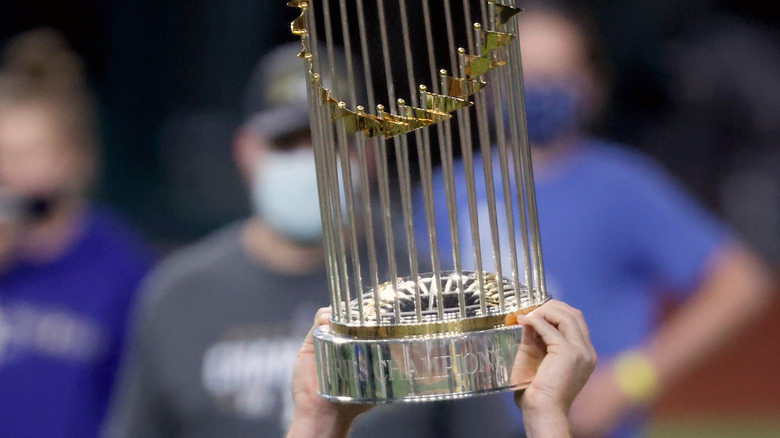
Who's Playing In The World Series 2021?

Top 3 Tennis Legends of All Time
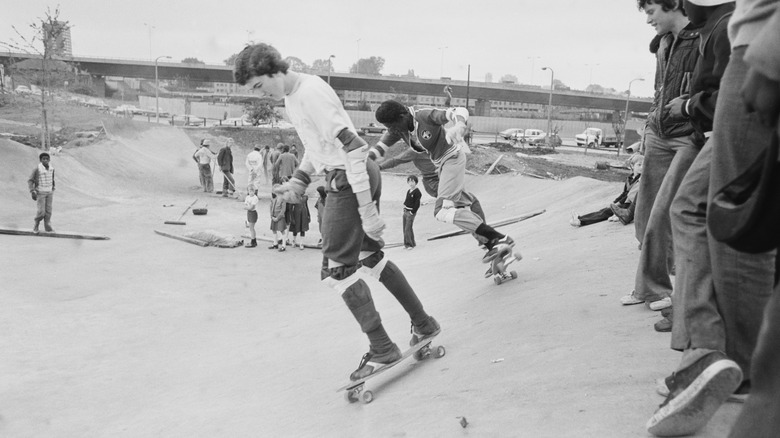
The Long History Of Skateboarding Explained

The Story Of The Man Who Introduced Hotdogs To Baseball Fans
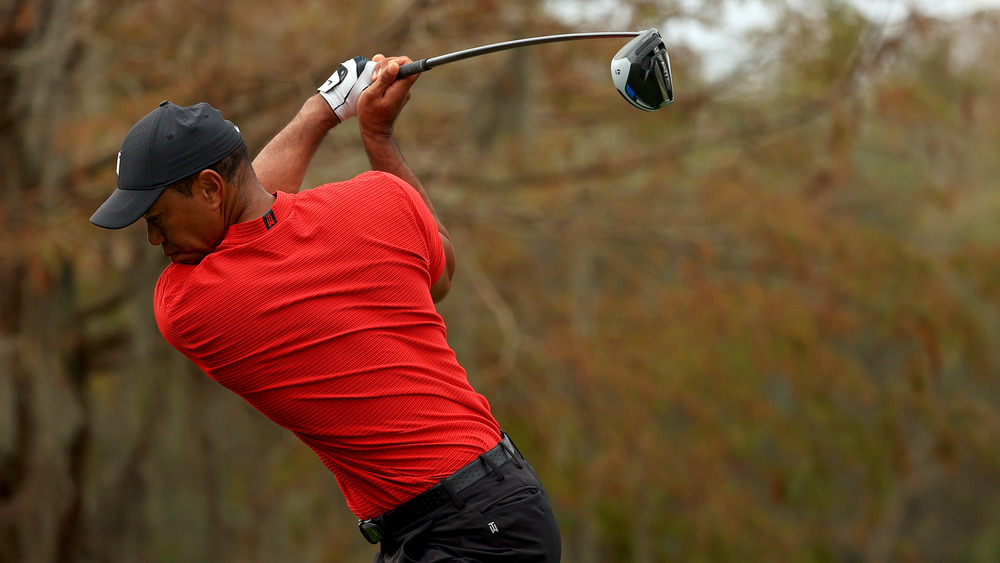
The Truth About Tiger Woods' Navy SEAL Training
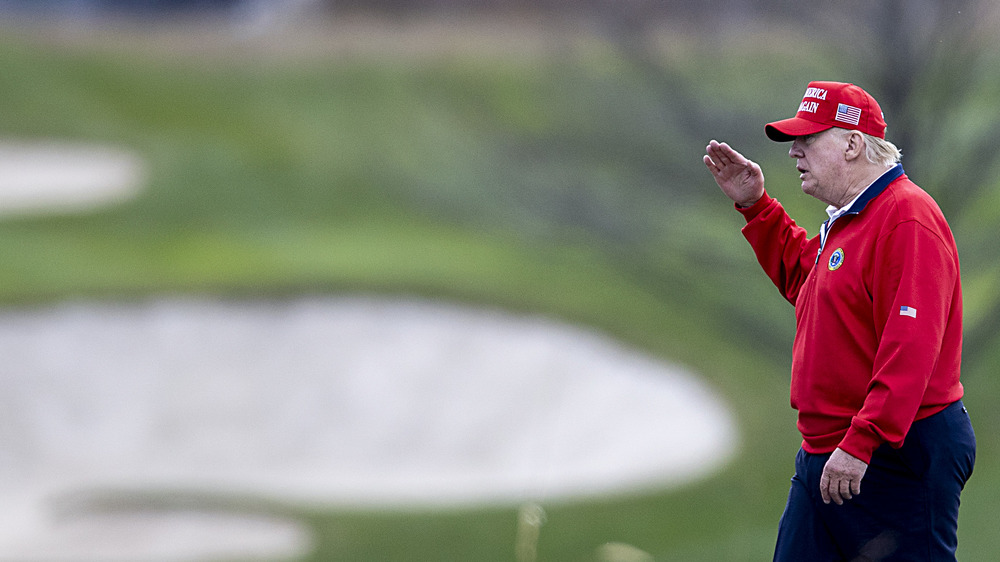
The Real Reason The PGA Just Stripped Trump Bedminster Of The 2022 Championship
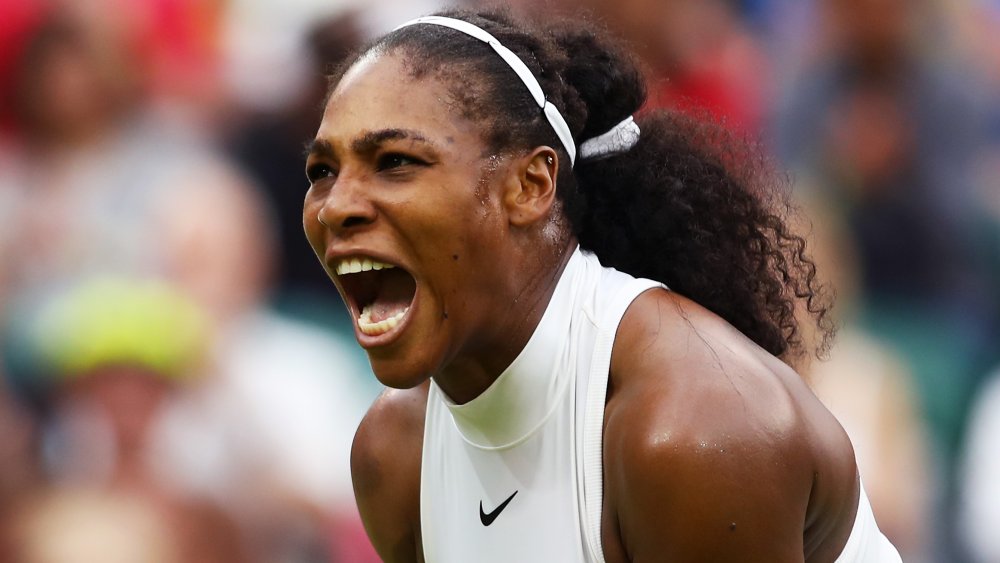
Extreme Sacrifices These Athletes Made To Keep Competing
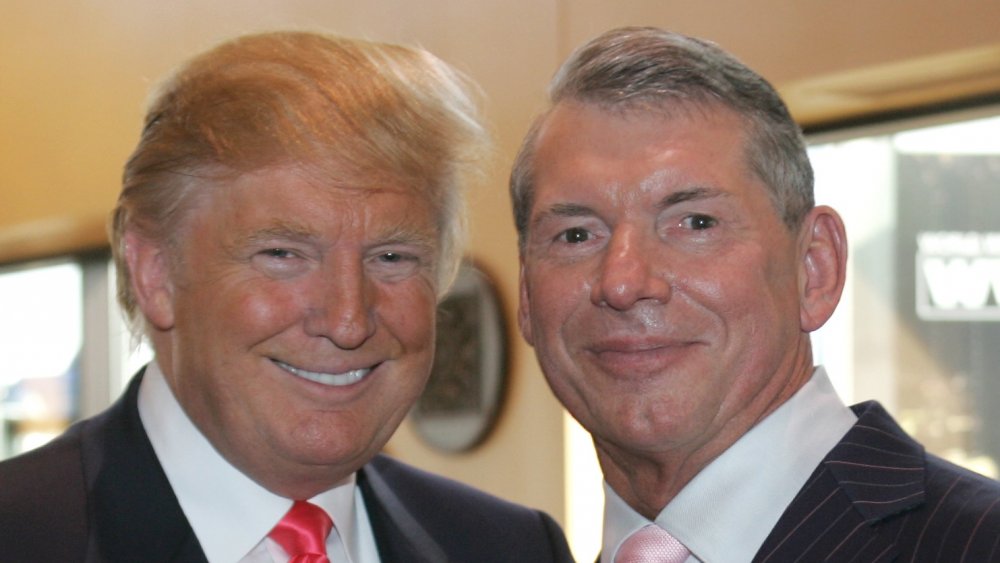
The Untold Truth Of Vince McMahon
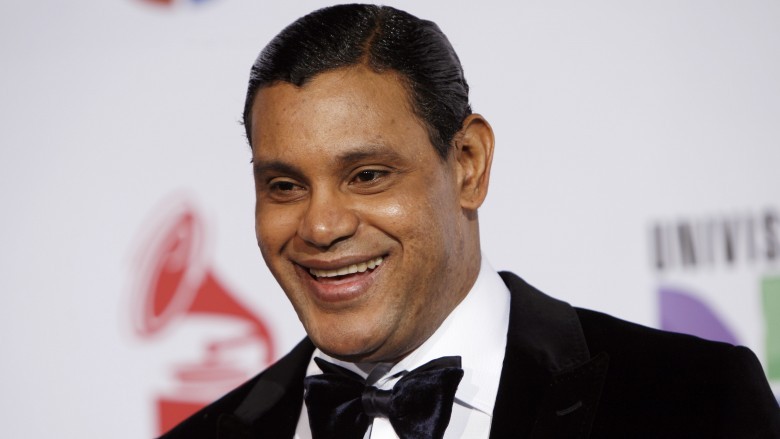
Athletes Who Don't Look Anything Like They Used To
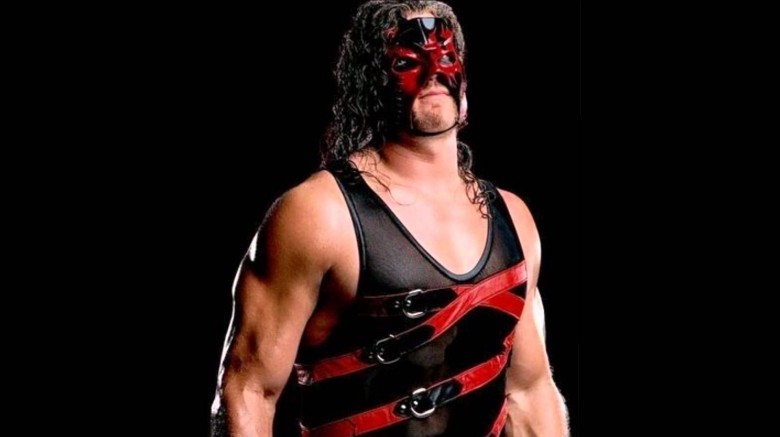
WWE Villains Who Are Actually Really Nice People
